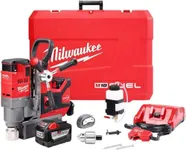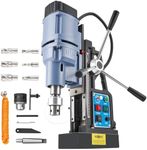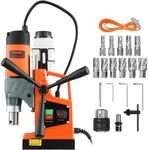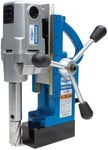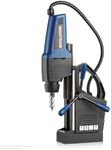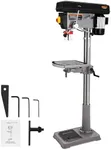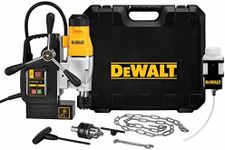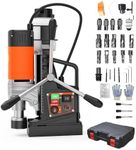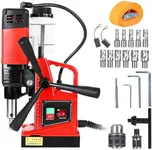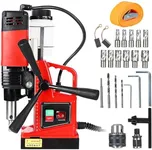Buying Guide for the Best Magnetic Drills
When choosing a magnetic drill, it's important to consider the specific needs of your projects and the environments in which you'll be working. Magnetic drills, also known as mag drills, are powerful tools used for drilling holes in metal surfaces. They are particularly useful in construction, fabrication, and industrial settings. To ensure you select the best magnetic drill for your needs, you should evaluate several key specifications. Understanding these specs will help you make an informed decision and ensure that the drill you choose will perform effectively and efficiently for your intended applications.Magnetic Adhesion ForceMagnetic adhesion force refers to the strength of the magnet that holds the drill in place on a metal surface. This spec is crucial because it determines how securely the drill will stay in position during operation. Magnetic adhesion force is typically measured in pounds or kilograms. For light-duty tasks, a lower adhesion force (around 1,000-2,000 pounds) may be sufficient. For heavy-duty industrial applications, a higher adhesion force (3,000 pounds or more) is necessary to ensure stability and safety. Choose a magnetic drill with an adhesion force that matches the demands of your projects to prevent slippage and ensure precise drilling.
Motor PowerMotor power indicates the strength and capability of the drill's motor, usually measured in watts or horsepower. This spec is important because it affects the drill's ability to handle different materials and drilling conditions. Lower power motors (around 500-800 watts) are suitable for lighter tasks and thinner materials, while higher power motors (1,000 watts or more) are better for heavy-duty tasks and thicker materials. Consider the types of materials you'll be drilling and the intensity of your projects when selecting motor power. A more powerful motor will provide better performance and efficiency for demanding tasks.
Drilling CapacityDrilling capacity refers to the maximum diameter and depth of holes that the magnetic drill can create. This spec is essential because it determines the range of applications the drill can handle. Drilling capacity is usually specified in terms of maximum hole diameter and depth. For general-purpose use, a drill with a moderate capacity (up to 1.5 inches in diameter and 2 inches in depth) may be adequate. For specialized or industrial applications, you may need a drill with a larger capacity (over 2 inches in diameter and deeper than 2 inches). Match the drilling capacity to the requirements of your projects to ensure the drill can handle the necessary tasks.
Speed SettingsSpeed settings refer to the number of different speeds at which the drill can operate, usually measured in revolutions per minute (RPM). This spec is important because different materials and drilling conditions require different speeds for optimal performance. Some magnetic drills offer variable speed settings, allowing you to adjust the RPM to match the material and task. For example, lower speeds are better for drilling through harder materials, while higher speeds are suitable for softer materials. Choose a magnetic drill with adjustable speed settings if you need versatility for different types of projects. This will help you achieve better results and extend the life of your drill bits.
Weight and PortabilityWeight and portability refer to the overall weight of the magnetic drill and its ease of transport. This spec is important because it affects how easily you can move and position the drill, especially in tight or elevated spaces. Lighter drills (under 30 pounds) are easier to handle and transport, making them suitable for on-site work and frequent repositioning. Heavier drills (over 30 pounds) may offer more stability and power but can be more challenging to move. Consider the typical work environment and the need for mobility when selecting a magnetic drill. If you frequently work in different locations or need to move the drill often, a lighter and more portable model may be more practical.
Safety FeaturesSafety features refer to the various mechanisms and designs incorporated into the magnetic drill to ensure safe operation. This spec is crucial because it helps prevent accidents and injuries during use. Common safety features include overload protection, which prevents the motor from overheating, and safety straps or chains, which secure the drill in case of power loss. Some drills also have automatic shut-off functions if the magnet loses adhesion. When choosing a magnetic drill, prioritize models with robust safety features to protect yourself and others during operation. These features can provide peace of mind and reduce the risk of accidents.
